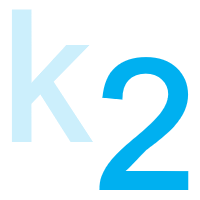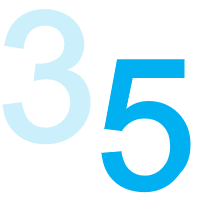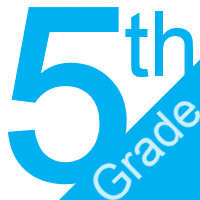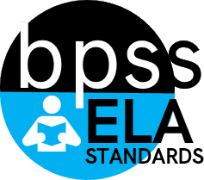5th Grade English
 Standards Glossaries
Standards Glossaries
| K Grade English | 1st Grade English | 2nd Grade English |
 Standards Glossaries
Standards Glossaries
| 3rd Grade English | 4th Grade English | 5th Grade English |
 Standards Glossaries
Standards Glossaries
| 6th Grade English | 7th Grade English | 8th Grade English |
 Standards Glossaries
Standards Glossaries
| 9th Grade English | 10th Grade English | 11th Grade English | 12th Grade English |
 Standards Glossaries
Standards Glossaries
| HS Journalism | HS Speech |
| All categories |
PRIORITIZED STANDARDS |
|---|
ELA-05.L.02ELA-05.L.02 Demonstrate command of the conventions of standard English capitalization, punctuation, and spelling when writing.Sub-Standards:
Practice:
a. Use commas and quotation marks in dialogue.
b. Add prefixes and suffixes to base words (e.g., sitting, smiled, cries, happiness). c. Spell grade-appropriate words correctly, consulting references as needed and/or using spelling patterns and generalizations (e.g., word families, position-based spelling, syllable patterns, ending rules, meaningful word parts).
Display proficiency in:
d. Form and use possessives.
e. Use correct capitalization overall. f. Use a comma to separate an introductory element from the rest of a sentence. g. Use underlining, quotation marks, or italics to indicate titles of works. | |
ELA-05.RFNarrative for the Reading Foundations Strand:The foundational skill standards are directed toward fostering students’ understanding and working knowledge of concepts of print, the alphabetic principle, and other basic conventions of the English writing system. These foundational skills are not an end in and of themselves; rather, they are necessary and important components of an effective, comprehensive reading program designed to develop proficient readers with the capacity to comprehend texts across a range of types and disciplines. Phonics: In fifth grade students continue to use strategies that enable them to decode multi-syllable words both in and out of context while reading. Fluency: Fluency is defined as being able to read orally with a reasonable rate of speed, with a high degree of accuracy, and with the proper expression (prosody). Fluency is one of several critical factors necessary for reading
comprehension.
How to help my child at home with the Foundational Skill Standards:
ResourcesCalculation Method for StrandsStrands are larger groups of related standards. The Strand Grade is a calculation of all the related standards. Click on the standard name below each strand to access the learning targets and proficiency scales for each strand's related standards. | |
ELA-05.RF.04ELA-05.RF.04 Read with sufficient accuracy and fluency to support comprehension.Sub-Standards:
a. Read grade level text with purpose and understanding.
b. Read grade level text orally with accuracy, appropriate rate, and expression on successive readings.
c. Use context to confirm or self-correct word recognition and understanding, rereading as necessary.
| |
ELA-05.RINarrative for Informational Reading Strand:Informational text is designed to communicate factual information rather than to tell a narrative. Much of our daily reading is linked with this genre. Common examples of informational text include: diaries, cookbooks, websites, informational picture
storybooks, field guides, and how-to books.
An important reading comprehension skill is the ability to determine the relative importance and precise meanings of words, sentences, paragraphs, sections, and chapters. Readers must be able to make sense of the meanings of words within sentences and of sentences within paragraphs. When readers grasp the main ideas, they better understand the purpose of the details—which, in turn, further strengthens their understanding of those main ideas. Readers, then, link their understanding of individual paragraphs to comprehend sections and chapters. To feel successful across content areas students must read widely and deeply from among a broad range of high-quality, increasingly challenging informational texts. Through extensive reading of biographies and autobiographies; books about history, social studies, science, and the arts; technical texts, including directions, forms, and information displayed in graphs, charts, or maps; and digital sources on a range of topics students gain knowledge in various informational areas as well as familiarity with various text structures and elements. Continued work on reading comprehension standards will heighten student abilities to read more complex informational (nonfiction) text. Teachers use assessment and observation to determine if students are ready to progress to more challenging reading selections. Each child is unique, so be flexible, and trust your judgment as you assist your child. Together teachers and parents can help students make better choices when selecting books to read. Not all selections children read must be in the level suggested by assessment, these levels serve as a guideline. Sometimes high interest in a topic allows success in a more difficult text, and sometimes simple text is more inviting to our children, balance is important. Increasing the frequency of reading is the highest predictor of success at any grade level. Building a child’s confidence, through successful experiences with reading, will encourage that desire to read more. Developing successful, life-long readers is our ultimate goal.
How to Help Your Child At Home with the Informational Text Strand:
Resources
Calculation Method for StrandsStrands are larger groups of related standards. The Strand Grade is a calculation of all the related standards. Click on the standard name below each strand to access the learning targets and proficiency scales for each strand's related standards. | |
ELA-05.RI.01 | |
ELA-05.RI.02 | |
ELA-05.RI.05 | |
ELA-05.RLNarrative for Literature Strand:Reading literature (fiction) allows students to learn about other lives and times that relate to their own personal experiences. In this strand, students will ask and answer questions about key details (characters, setting, plot), along with retelling what they have read. Literature (fiction) helps readers learn important life lessons through the lives of the characters, comparing their own experiences with the experiences of the characters they read about. Reading literature (fiction) allows us to learn to appreciate the beauty of the language, and to be articulate speakers and writers. Before gaining deeper meanings, such as making logical inferences or drawing conclusions, readers must grasp the central details, characters, events, and ideas from the text. importance of analyzing details and content that may be presented in a variety of formats. By drawing on the central details and facts of the text, skilled readers draw logical inferences and conclusions, or extend the themes of the present text to other literary settings. Fifth grade students must read widely and deeply from among a broad range of high-quality, increasingly literary texts. Through extensive reading of stories, dramas, poems, and myths from diverse cultures and different time periods, students gain literary and cultural knowledge as well as familiarity with various text structures and elements. Continued work on reading comprehension standards will heighten student abilities to read more complex literature (fiction) text. Teachers use assessment and observation to determine if students are ready to progress to more challenging reading selections. Each child is unique, so be flexible, and trust your judgment as you assist your child. Together teachers and parents can help students make better choices when selecting books to read. Not all selections children read must be in the level suggested by assessment, these levels serve as a guideline. Sometimes high interest in a topic allows success in a more difficult text, and sometimes simple text is more inviting to our children, balance is important. Increasing the frequency of reading is the highest predictor of success at any grade level. Building a child’s confidence, through successful experiences with reading, will encourage that desire to read more. Developing successful, life-long readers is our ultimate goal. How to Help Your Child At Home with the Literature Strand:
Resources:Calculation Method for StrandsStrands are larger groups of related standards. The Strand Grade is a calculation of all the related standards. Click on the standard name below each strand to access the learning targets and proficiency scales for each strand's related standards. | |
ELA-05.RL.01 | |
ELA-05.SLNarrative for the Speaking and Listening StrandSpeaking and listening standards require students to develop a range of oral communication and interpersonal skills that facilitate various types of discussion and oral exchange. Students must learn to work together, express and listen carefully to ideas,
and integrate information from various sources, (e.g., oral, visual, quantitative, and media). Students must also gain skills in evaluating what they hear, use various sources to support what they are communicating, and adapt their speech to the content
and the task at hand.
How to help your child with the Speaking and Listening Standards:
ResourcesCalculation Method for StrandsStrands are larger groups of related standards. The Strand Grade is a calculation of all the related standards. Click on the standard name below each strand to access the learning targets and proficiency scales for each strand's related standards. | |
ELA-05.SL.01
ELA-05.SL.01 Engage effectively in a range of collaborative discussions (one-on-one, in groups, and teacher-led) with diverse partners on grade 5 topics and texts, building on others' ideas and expressing their own clearly.
a. Come to discussions prepared, having read or studied required material; explicitly draw on that preparation and other information known about the topic to explore ideas under discussion.
b. Follow agreed-upon rules for discussions and carry out assigned roles. c. Pose and respond to specific questions by making comments that contribute to the discussion and elaborate on the remarks of others. d. Review the key ideas expressed and draw conclusions in light of information and knowledge gained from the discussion. | |
ELA-05.WNarrative for the Writing Strand:The Writing standards outline three primary types of text that students are expected to produce: opinion, informational, and narrative texts. Students are expected to produce each of these text types and to understand the purpose for each. When writing production is tightly integrated with purpose, the differentiation between text types will be increasingly evident. Similarly, as students’ sophistication and maturity with language, vocabulary, and syntax grow, they will be better equipped to write for a specific purpose.The writing standards focus on instruction that enables students to gain adequate mastery of a range of writing skills and applications. As students progress through the grade levels they should demonstrate increasing sophistication in all aspects of writing, from vocabulary and syntax to the development and organization of ideas. The content and source students address are of an increasingly demanding nature. As they advance through the grade levels, students are expected to meet each year’s grade-specific standards and retain or further develop skills and understandings mastered during the preceding grades. Students continue to learn and apply the rules of standard written English and to strengthen and expand their vocabulary, use of language, and organization of ideas. You will find the standards for these skills in the Language Strand.
How can I help my child at home with the writing strand standards?
ResourcesCalculation Method for StrandsStrands are larger groups of related standards. The Strand Grade is a calculation of all the related standards. Click on the standard name below each strand to access the learning targets and proficiency scales for each strand's related standards. | |
ELA-05.W.01ELA-05.W.01 Write opinion pieces on topics or texts, supporting a point of view with reasons and information.Sub-Standards:
a. Introduces a topic or text clearly, states a clear opinion, and creates an organizational structure in which ideas are logically grouped to support the writer’s purpose.
b. Provides logically ordered reasons that are supported by facts and details.
c. Links opinion and reasons using transitional words and phrases (e.g. because, therefore, in addition, for example).
d. Ends with a strong concluding statement or section related to the opinion presented. | |
ELA-05.W.02ELA-05.W.02 Write informative/explanatory texts to examine a topic and convey ideas and information clearly.Sub-Standards:
a. Introduce a topic clearly, provide a general observation and focus, and group related information logically; include formatting (e.g., headings), illustrations, and multimedia when useful to aid in comprehension.
b. Develop the topic with facts, definitions, concrete details, quotations, or other information and examples related to the topic.
c. Link ideas within and across categories of information using transitional words, phrases, and clauses (e.g., in contrast, especially).
d. Use precise language and domain-specific vocabulary to inform about or explain the topic. e. Provide a concluding statement or section related to the information or explanation presented. | |
ELA-05.W.03ELA-05.W.03 Write narratives to develop real or imagined experiences or events using effective technique, descriptive details, and clear event sequences.Sub-Standards:
a. Focuses the reader by establishing a situation and introduces a narrator and/or characters; organizes an event sequence that unfolds naturally.
b. Uses narrative techniques, such as dialogue, description, and pacing, to develop experiences and events by showing the characters’ responses to the experiences.
c. Uses a variety of transitional words to manage the sequence of events.
d. Uses descriptive words and sensory details to convey experiences and events precisely. e. Ends with a conclusion that wraps up the narrative by including thoughts and feelings about the episode or event. | |
(L) LANGUAGE |
|---|
ELA-05.LNarrative for the Language Strand:As they move through formal schooling, students must gain control over the many conventions of standard English grammar, usage, and mechanics. They must also learn various ways to convey meaning effectively. Language standards include the rules of standard
written and spoken English as well as the use of language as craft and informed choice among alternatives. Fifth grade students gain control over proper use of pronouns, adjectives, adverbs, and other parts of speech, produce simple, compound,
and complex sentences, and demonstrate command of the conventions of standard English capitalization, punctuation, and spelling when writing.
How to help your child with the standards in the Language Strand:
ResourcesCalculation Method for StrandsStrands are larger groups of related standards. The Strand Grade is a calculation of all the related standards. Click on the standard name below each strand to access the learning targets and proficiency scales for each strand's related standards. | |



 Grade 5
Grade 5